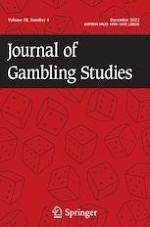Erschienen in:

20.11.2021 | Original Paper
Gambling Disorder in an Italian Population: Risk of Suicide Attempts and Associated Demographic-Clinical Factors using Electronic Health Records
verfasst von:
Raimondo Maria Pavarin, Chiara Fabbri, Angelo Fioritti, Silvia Marani, Diana De Ronchi
Erschienen in:
Journal of Gambling Studies
|
Ausgabe 4/2022
Einloggen, um Zugang zu erhalten
Abstract
To identify the demographic and clinical characteristics associated with access to Emergency Departments for Suicide Attempt in a cohort of patients with Gambling disorders. We used electronic health records of inpatient and outpatient services to identify individuals who received a diagnosis of gambling disorder (ICD-9 or ICD-10 codes) in the Metropolitan area of Bologna from 2009 to 2019. In this cohort we identified accesses to Emergency Departments for suicide attempt through cross-matching with electronic records. We calculated Crude Suicide Attempt Rates; we also included the demographic-clinical variables in a multivariate Poisson regression. We identified 692 patients with a diagnosis of gambling disorder and a total of 2733 Person Years. The Crude Suicide Attempt Rate per 1000 Person Years was 9.17 (95% CI 6.20–13.58), higher for females and much higher than the general population (incidence rate ratio = 93.72). The multivariate analysis showed a higher risk of suicide attempt in the year following the first contact with a clinical service, in patients younger than 45 years, with alcohol use disorders and personality disorders. This study evidenced a high risk of access to Emergency Departments for suicide attempt in individuals with a diagnosis of gambling disorder and highlighted important demographic and clinical factors that should be considered when evaluating suicide risk in this population.











